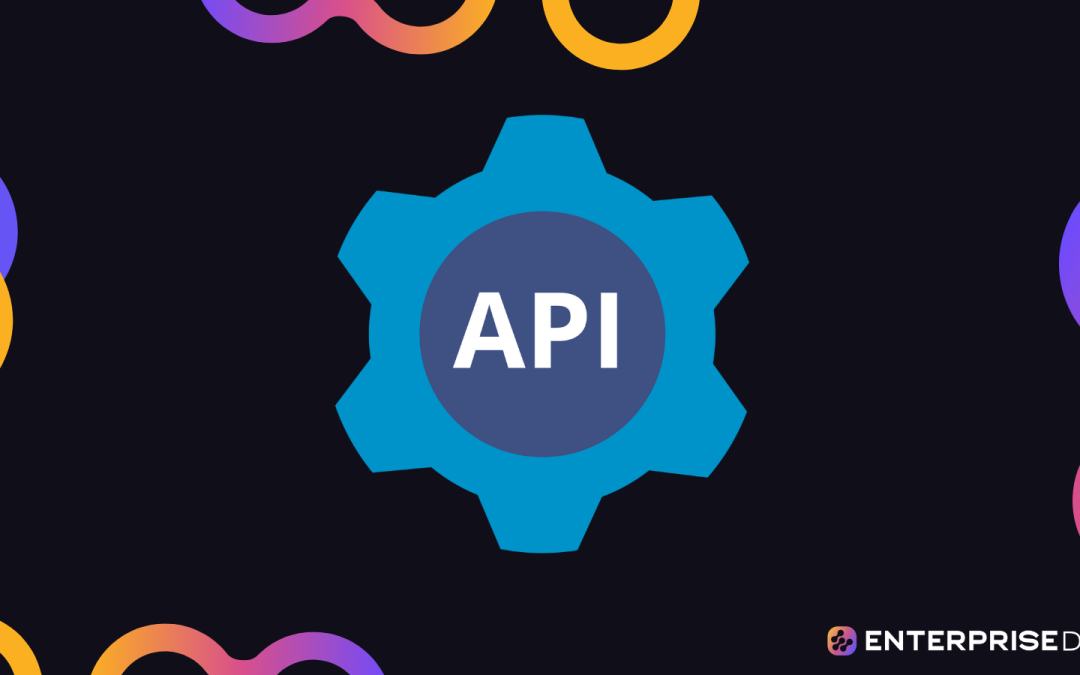If you are not familiar with Application Programming Interfaces (APIs), you may be missing out on a powerful tool that can revolutionize your business operations.
APIs enable different software systems to communicate with each other, streamlining processes and enabling the sharing of data and resources. By harnessing the capabilities of APIs, businesses can unlock new levels of efficiency, automation, and innovation.
To successfully implement an API strategy, it is essential to start by understanding your business goals and the specific needs of your organization. You should also focus on fostering a culture of collaboration and open communication within your teams. This will ensure that you can harness the full potential of APIs and drive transformative change across your entire business.
This article will dive into how you can use APIs to optimize your business processes and supercharge your operations. We will cover everything from building an API strategy to harnessing the full potential of APIs to transform your business.
Let’s get started!
The Basics of API Strategy

An API strategy is a plan that outlines how an organization will use APIs to improve its business operations and deliver value to its customers. It helps businesses to build a bridge between their digital assets and the wider digital ecosystem.
Developing an API strategy is crucial for every business in the digital age. It is what separates the digital winners from the digital laggards. A good API strategy helps businesses to unlock new opportunities, streamline processes, and create new revenue streams.
What Does an API Strategy Do?
API strategies can be used to achieve a wide range of business goals. Here are some of the main things you can accomplish with an API strategy:
- Streamline business processes: APIs can connect different software systems and automate data transfers, saving time and reducing errors.
- Improve customer experience: APIs can enable seamless integrations between your products and services and those of other companies, making it easier for customers to do business with you.
- Create new revenue streams: By opening up your data and services through APIs, you can create new opportunities to monetize your offerings.
- Accelerate innovation: APIs make it easier for developers to build new applications and services, allowing your organization to stay ahead of the competition.
- Increase scalability and flexibility: APIs enable you to adapt and grow your technology infrastructure without the need for extensive retooling.
Developing a successful API strategy requires careful planning, collaboration across different teams, and a clear understanding of your organization’s goals.
Key Elements of an API Strategy
A successful API strategy should encompass the following key elements:
- API Documentation and Standards: Ensure that your APIs are well-documented and follow industry best practices. This will make them easier for developers to understand and use.
- Developer Engagement and Support: Encourage collaboration with external developers and provide the resources they need to build applications using your APIs.
- API Governance and Security: Implement policies and controls to manage API usage and protect your organization’s data and systems.
- API Monetization: Explore ways to generate revenue from your APIs, such as through paid access, freemium models, or partnerships.
- API Analytics and Performance Monitoring: Track how your APIs are being used and identify opportunities for improvement.
Your API strategy should align with your organization’s overall goals and be adaptable to changing business needs.
Building a Business Case for API Strategy

Developing a successful API strategy is crucial to achieving digital transformation and remaining competitive in the modern business landscape. But to do that, you need to build a solid business case that justifies the investment in API development.
A strong business case for an API strategy will help you secure buy-in from key stakeholders, including executives, IT teams, and business units.
The Benefits of API Strategy
When making the case for an API strategy, it’s essential to highlight the specific benefits that it will bring to your organization.
API strategies can lead to:
- Improved business agility
- Faster time-to-market for new products and services
- Enhanced customer experiences
- Increased revenue through new business models and partnerships
- Reduced operational costs and complexity
- Better security and compliance
These benefits can have a significant impact on your bottom line and overall competitiveness.
Aligning API Strategy With Business Goals
To build a strong business case for an API strategy, it’s important to align it with your organization’s overall business goals. Clearly outline how the API strategy will support your company’s growth, innovation, and customer satisfaction.
Some examples of how an API strategy can align with business goals include:
- Enabling faster development of new products and services, leading to increased revenue.
- Improving customer experiences by integrating with third-party applications and services.
- Reducing time and cost for IT projects by reusing existing APIs and fostering collaboration across teams.
- Creating new revenue streams by monetizing APIs through partnerships or direct sales.
By demonstrating a clear connection between the API strategy and your organization’s goals, you can build a compelling business case that will help you secure the necessary resources and support.
Creating an API Culture in Your Organization

When it comes to implementing an API strategy, one of the most critical elements is creating a culture within your organization that embraces APIs.
An API culture is about more than just using APIs. It’s about fostering a mindset that sees APIs as essential tools for collaboration, innovation, and growth.
To create an API culture in your organization, you need to:
- Educate and Train Your Teams: Make sure everyone in your organization understands what APIs are, how they work, and the benefits they can bring. Provide training and resources to help your teams learn how to use and create APIs effectively.
- Encourage Collaboration: APIs are all about enabling different systems and teams to work together. Encourage collaboration between your IT, business, and development teams. Make sure everyone is working towards common goals and using APIs to their full potential.
- Celebrate Successes and Share Best Practices: When teams achieve success with APIs, celebrate it! Share success stories and best practices across your organization. This will inspire others and help build momentum for your API initiatives.
- Foster a Developer Mindset: APIs are created and used by developers. Encourage a developer mindset in your organization, even among non-technical staff. This means being curious, open to new ideas, and willing to experiment and learn.
- Provide the Right Tools and Support: Make sure your teams have the tools and support they need to work with APIs effectively. This might include API management platforms, developer portals, and dedicated API teams.
- Empower Your Teams to Experiment: APIs are a powerful tool for innovation. Encourage your teams to experiment with new ideas and ways of using APIs. This can lead to new, innovative solutions and help your organization stay ahead of the curve.
Creating an API culture in your organization takes time and effort, but the benefits are well worth it. By fostering a mindset that embraces APIs, you can unlock new opportunities for collaboration, innovation, and growth.
Managing API Governance

API governance is a crucial aspect of your API strategy that focuses on ensuring your organization’s APIs are managed, secure, and compliant with your standards and policies.
In essence, API governance involves making sure that the APIs you develop, use, or expose are managed in a way that aligns with your organization’s overall business and technology goals.
Effective API governance will help you avoid potential issues such as security breaches, compliance violations, or inefficiencies caused by duplicate or conflicting APIs.
Key Components of API Governance
When implementing API governance, there are several key components to consider:
- API Lifecycle Management: This includes defining the process for creating, testing, deploying, and maintaining APIs.
- Security and Compliance: Implement policies and controls to ensure that APIs and their data are secure and comply with relevant regulations.
- API Documentation and Standards: Establish guidelines for API documentation and ensure that APIs adhere to industry best practices and organizational standards.
- Monitoring and Reporting: Regularly monitor API performance and usage, and have mechanisms in place for reporting and resolving issues.
- API Versioning and Change Management: Plan for the evolution of APIs by defining how and when they can be updated and communicating changes to API consumers.
How to Govern API Ecosystems
To effectively govern an API ecosystem, consider the following steps:
- Define a Clear API Strategy: Establish clear objectives and guidelines for your API ecosystem. Define the target audience, business goals, and key performance indicators (KPIs) for your APIs.
- Create a Centralized API Management System: Implement a centralized platform for managing your APIs. This platform should allow you to create, document, and manage APIs in a consistent manner.
- Establish an API Governance Team: Create a team responsible for defining and enforcing API governance policies. This team should include representatives from various departments, such as IT, security, compliance, and business.
- Implement a Secure API Gateway: Deploy a secure API gateway to manage and protect your APIs. The API gateway should provide features such as authentication, authorization, rate limiting, and encryption.
- Develop API Governance Policies: Create a set of policies and procedures that cover various aspects of API governance, including security, versioning, change management, documentation, and compliance.
- Enforce API Governance Policies: Regularly monitor your API ecosystem to ensure compliance with your governance policies. Implement automated tools and processes to detect and address non-compliant APIs.
- Promote Collaboration: Encourage collaboration between API consumers and API providers. Provide tools and resources that make it easy for developers to discover, understand, and use APIs.
- Monitor and Measure Performance: Continuously monitor the performance of your APIs and API ecosystem. Track key metrics, such as API usage, response times, error rates, and security incidents.
- Adapt and Improve: Regularly review and update your API governance policies to adapt to changing business needs, technology trends, and security threats.
By following these steps, you can establish a strong API governance framework that ensures the success and security of your API ecosystem.
Selecting the Right API Management Platform

API management platforms play a crucial role in implementing a successful API strategy. They are designed to streamline the process of creating, managing, and monitoring APIs, making it easier for businesses to develop and maintain a strong API ecosystem.
Choosing the right API management platform is a critical decision that can have a significant impact on the success of your API initiatives. In this section, we’ll explore the key factors to consider when selecting an API management platform.
What to Look for in an API Management Platform
When evaluating different API management platforms, consider the following key features:
- API Gateway: Look for a platform that offers an API gateway, which acts as a single entry point for all incoming API requests. The API gateway is responsible for handling authentication, authorization, rate limiting, and other security features.
- Developer Portal: An API management platform should include a developer portal that makes it easy for developers to discover, understand, and use your APIs. The developer portal should provide comprehensive API documentation, code samples, and interactive tools.
- API Analytics: API analytics are essential for gaining insights into how your APIs are being used. Look for a platform that offers robust analytics features, such as API usage metrics, error rates, and response times.
- Security Features: Security is a top priority when managing APIs. Ensure that the platform you choose offers strong security features, such as OAuth support, role-based access control, and encryption.
- Lifecycle Management: An effective API management platform should support the entire API lifecycle, from design and development to testing and deployment. It should also provide tools for versioning, change management, and deprecation.
- Integration Capabilities: Look for a platform that offers easy integration with your existing systems and tools, such as databases, CRM systems, and enterprise applications. This will make it easier to build and maintain APIs.
- Scalability: As your API initiatives grow, you’ll need a platform that can scale to handle increasing API traffic and complexity. Look for a platform that offers horizontal scalability and supports high availability.
- Vendor Support: Finally, consider the level of support provided by the API management platform vendor. Look for a vendor with a good track record of providing timely updates, bug fixes, and responsive customer support.
Popular API Management Platforms
There are several popular API management platforms on the market today. Some of the most well-known options include:
- Apigee: Google Cloud’s Apigee is a comprehensive API management platform that offers a wide range of features, including an API gateway, developer portal, analytics, and security. It is a popular choice for large enterprises.
- Mulesoft Anypoint Platform: Mulesoft’s Anypoint Platform provides a full suite of integration and API management tools. It includes features such as an API gateway, developer portal, analytics, and lifecycle management.
- AWS API Gateway: Amazon Web Services (AWS) offers an API management solution as part of its cloud platform. The AWS API Gateway provides features for creating, managing, and securing APIs, and it integrates seamlessly with other AWS services.
- Azure API Management: Microsoft’s Azure API Management is a robust platform that offers features such as an API gateway, developer portal, analytics, and security. It is well-suited for organizations using the Azure cloud platform.
- IBM API Connect: IBM’s API Connect is an enterprise-grade API management platform that provides features for creating, managing, and securing APIs. It is designed to work seamlessly with other IBM products and services.
- TIBCO Cloud Mashery: TIBCO Cloud Mashery is a modern API management platform that offers an API gateway, developer portal, analytics, and security features. It is well-suited for organizations looking for a cloud-based solution.
When evaluating these platforms, consider the specific needs of your organization, as well as the features and pricing offered by each platform.
Strategies for API Adoption and Developer Engagement

To succeed in today’s digital economy, businesses must have an effective API adoption and developer engagement strategy. API adoption refers to the process of integrating APIs into your business operations and IT infrastructure.
Developer engagement, on the other hand, focuses on building relationships with developers who create applications that use your APIs. These two concepts go hand-in-hand, as successful API adoption depends on developers’ ability to understand and use your APIs effectively.
3-Step Process for API Adoption
- Develop a clear understanding of the value of APIs: APIs are designed to simplify the integration of different software systems, so the value of adopting APIs is apparent. By connecting various applications and services, you can streamline processes, automate tasks, and enhance the overall efficiency of your operations.
- Create an API strategy: A solid strategy ensures that your API adoption is well-planned and aligns with your business goals. This includes identifying the APIs you need, determining how to implement them, and setting goals for their use.
- Collaborate with developers: Engaging with developers and providing the necessary resources and support will make API adoption a smoother process. Communication, documentation, and an open feedback loop are essential.
5-Step Process for Developer Engagement
- Understand your audience: Get to know the developers who may be interested in using your APIs. Learn about their needs, preferences, and pain points. This will help you tailor your engagement efforts to be more effective.
- Provide quality documentation: Well-organized and up-to-date documentation is key to successful developer engagement. This includes clear instructions, code samples, and troubleshooting information.
- Offer support and resources: Developers need the right tools, resources, and support to work with your APIs effectively. Provide an easy-to-use API management platform, a developer portal, and responsive support.
- Encourage collaboration and feedback: Developers often appreciate the opportunity to collaborate with others and provide feedback. Host events, such as hackathons or workshops, to bring developers together and encourage interaction.
- Recognize and reward contributions: Acknowledging and rewarding developers who make significant contributions or provide valuable feedback can help build a strong developer community and encourage ongoing engagement.
With a well-thought-out API adoption and developer engagement strategy, you can drive the successful integration of APIs into your business and foster collaboration with developers. This will not only improve the efficiency of your operations but also create a more vibrant developer community.
How to Secure and Scale APIs

As you work on your API strategy, two key considerations that will emerge are security and scalability. In this section, we’ll delve into these areas and discuss best practices for securing and scaling your APIs.
Security Best Practices for APIs
When working with APIs, security should be a top priority. APIs can expose sensitive data and functionality, making them a target for malicious actors. To protect your APIs, consider the following security best practices:
- Use HTTPS: Always use HTTPS for communication between clients and your API server. This will encrypt the data exchanged and prevent eavesdropping.
- Implement authentication: Require clients to authenticate themselves before accessing your API. Use methods such as API keys, OAuth, or JSON Web Tokens (JWT) to verify the identity of the client.
- Enforce authorization: Once a client is authenticated, enforce proper authorization to ensure they have the necessary permissions to access specific resources or perform certain actions.
- Validate input data: Ensure that the data sent to your API is valid and safe. Perform input validation and sanitization to prevent common security issues like SQL injection or cross-site scripting (XSS).
- Protect sensitive data: If your API deals with sensitive data, such as user credentials or payment information, make sure this data is stored and transmitted securely. Use encryption and other protective measures.
- Rate limit and throttle: Prevent abuse and denial-of-service (DoS) attacks by implementing rate limiting and request throttling. Control the number of requests a client can make in a given time period.
- Monitor and log: Keep an eye on your API’s usage, performance, and security events. Logging and monitoring can help you identify potential security issues and track down problems.
- Stay up to date: Regularly update your API and its dependencies to patch security vulnerabilities. Stay informed about security best practices and industry standards.
Scaling Your API
As your business grows and your API usage increases, you’ll need to scale your APIs to handle the additional load. Here are some strategies for scaling your API:
- Use a content delivery network (CDN): CDNs can help distribute your API’s content and reduce latency for clients around the world.
- Optimize database queries: Make sure your database queries are efficient and well-indexed to handle the increasing load.
- Implement caching: Use caching to store and serve frequently requested data, reducing the need for your API to generate the same data repeatedly.
- Load balancing: Distribute incoming requests across multiple API servers using a load balancer to prevent any single server from becoming overwhelmed.
- Asynchronous processing: When possible, use asynchronous processing for time-consuming tasks to free up API server resources.
- Auto-scaling: Implement auto-scaling capabilities that can automatically add or remove API servers based on demand.
By implementing these security and scaling best practices, you can ensure that your APIs remain secure and performant as your business grows.










